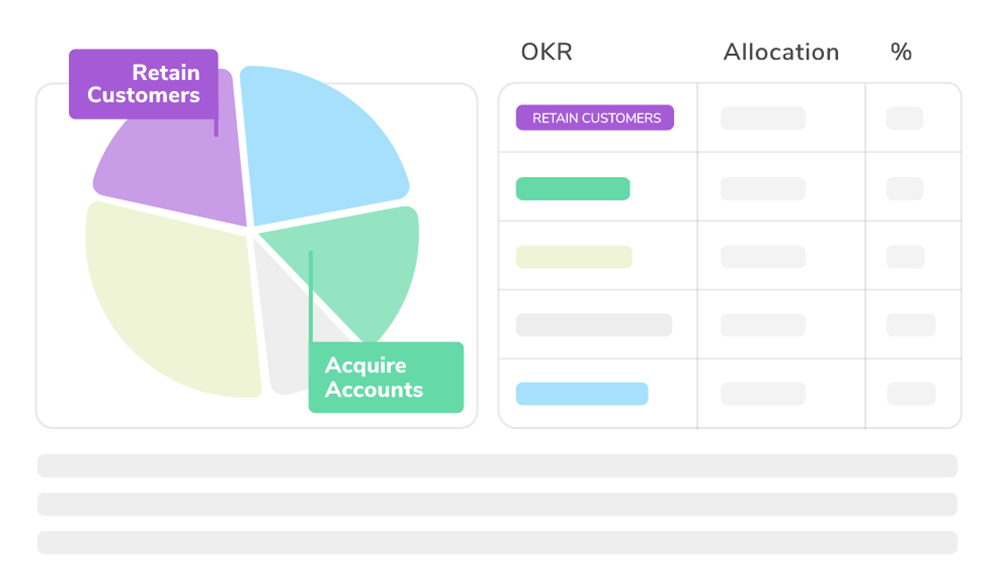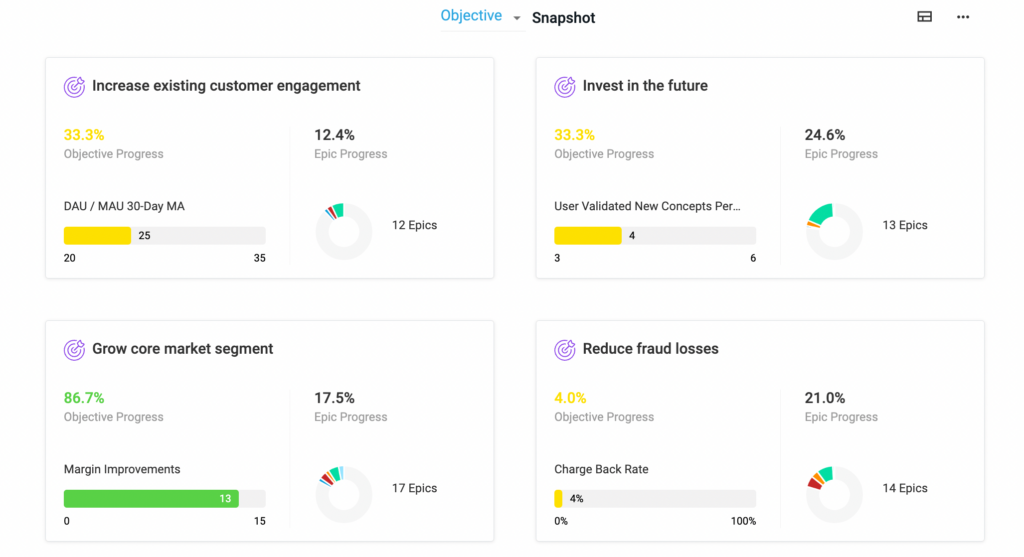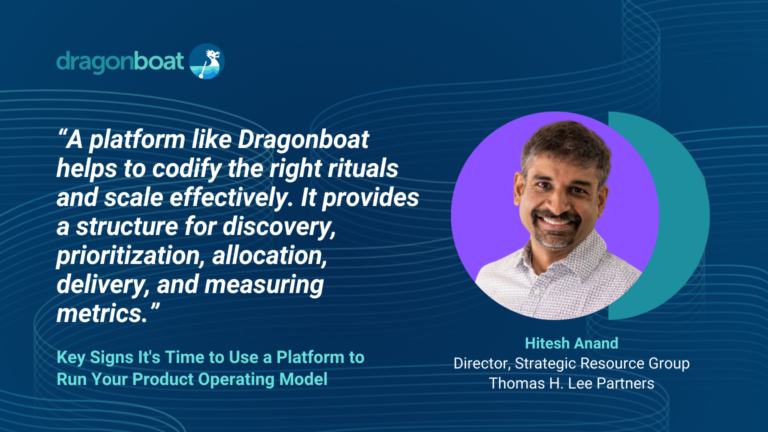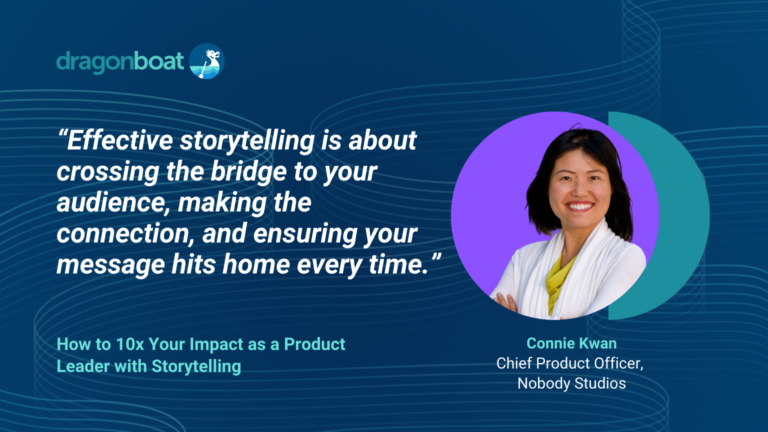Outcome-based allocation and outcome-based funding are methods in product and portfolio management to effectively make decisions and connect goals and strategies with roadmaps and execution.
This blog post delves into the significance of outcome-based allocation and funding, exploring their essence, importance, and effective implementation strategies within product teams using Dragonboat.
What Is Outcome-Based Allocation?
Effective portfolio management steers a company toward success. At the heart of this lies investment allocation, a critical factor for the success of the product portfolio. For a deeper understanding, explore our insightful post on the topic here.
A portfolio can be viewed from many perspectives – such as a portfolio of products, market segments, or targeted outcomes. For effective portfolio management, it is essential to establish clear allocation targets for key perspectives, such as outcome or product.
When we talk about outcome-based allocation, we are referring to strategically distributing investments (often in the measure of resources or monetary value) tailored to specific goals within a certain timeframe. These goals can be outlined annually, over a 3-year period, or even quarterly.
Why Is Outcome-Based Allocation Important?
A common challenge faced by product teams is effective prioritization. This often stems from a lack of clear, strategic objectives to guide decision-making.
To address this, Melissa Perri emphasizes the role of strategic intent in guiding teams towards desired outcomes:
“An outcome-focused product leader does not mandate initiatives but instead provides strategic intents. The strategic intent points to the outcome the business wants the team to achieve.”
– Melissa Perri, CEO and Founder of ProduxLabs
Without a strategic intent, the prioritization can become a mere exercise in ticking off features – turning into what is known as a ‘feature factory’. Traditional prioritization methods like RICE or other scoring systems fall short if they aren’t anchored in an evolving strategic intent or outcome. Consider, for instance, the dilemma of prioritizing the growth of new customers versus the retention of existing ones.
Outcome-based allocation provides product teams with strategic direction on which outcomes to prioritize and the required investment for each, positively impacting the success of product development efforts.
How to Implement Outcome-Based Allocation?
Implementing outcome-based allocation in product management is a multifaceted process that requires clear structure and strategic planning.
Product-based or initiative-based allocation is relatively easy as the initiative or product area has an owner. That owner is responsible for evaluating a list of roadmap ideas, guiding both prioritization and resourcing.
Outcome-based allocation introduces a layer of complexity, necessitating appointing an owner for each specific outcome. The efforts to achieve these outcomes, however, may span across multiple teams and products, making coordination and collaboration crucial.
The implementation of outcome-based allocation is rooted in strategic and portfolio planning. Critical decisions regarding which outcomes to focus on and how resources should be allocated are typically made at the executive level. This often involves a collaborative effort between the CPO, CFO, and CEO.
The coordination of allocation decisions for product teams is typically owned by product operations. This role often involves collaboration with product leads or strategy operations to ensure a harmonious integration of strategy and execution.
The cadence of these processes is typically quarterly or annual. The timing is determined based on how quickly the outcome can be achieved and measured, as well as the responsiveness of the roadmap to the changes.
For a practical approach to this process, here is a step-by-step guide on conducting quarterly planning and OKR roadmapping.
What Is Outcome-Based Funding?
Outcome-based funding is a nuanced approach that complements outcome-based allocation, but with a sharper focus on the distribution of the allocated budget and resources. Funding is a process integrated with allocation, where resources or budget are given to a team, initiative, or in this case, an outcome.
Consider a scenario where $10 million is allocated for the development of a new AI product. There are three primary methods to manage the process from funding to execution:
- Full Upfront Funding: Entire allocated funding is provided at once, with the expectation of product launch upon completion.
- Deliverable-Based Funding: Funds are distributed in stages based on deliverable milestones, up to the allocated amount. For example, $5 million for shipping version 1, $2 million for version 2, and $3 million for product launch.
- Outcome Milestone Funding: Funding is tied to the achievement of specific outcome milestones. For instance, after releasing version 1, and achieving desired product/ customer/ marketing objectives, decide whether to invest $2 million in version 2 or adjust the funding based on the progress towards the desired outcome.
Quincy Hunte, Global Transformation Product Leader at Amazon Web Services, shared his insights into Amazon’s approach to outcome-based funding on the Product Thinking Podcast:
“If you need $1M funding, you’d not get them all. It’d be done in batches. (…) Has to have established KPIs that say by this period, I want to be able to meet XYZ metrics. This is how I’m going to do it, and this is the value I’m gonna deliver to the customer… if this does not happen, I’m gonna pivot.”
– Quincy Hunte, Global Transformation Product Leader at Amazon Web Services
How to Use Dragonboat and Bring Outcome-Based Allocation and Outcome-Based Funding to Your Product Teams?
While both outcome-based allocation and outcome-based funding are critical to best achieve product portfolio outcomes, you can see the workflow involves many roles and requires lots of information. This is why a product portfolio management software can greatly streamline the process, and more importantly, provide data for forecasting, tracking, and adjusting.
To implement outcome-based allocation, use Dragonboat’s Portfolio Roadmap Product to:
- Set clear allocation targets aligned with your strategic outcomes or intents.
- Brainstorm product ideas – Use various techniques, such as the opportunity solution tree, to generate and explore ideas.
- Gather and analyze customer insights feedback and collaborate with GTM partners.
- Use data-driven methods to prioritize features and initiatives, based on their potential impacts on the outcomes. This could involve metrics like revenue impact, Market Opportunity Analysis and Response (MoAR), or you can develop a customized prioritization framework.
- Kick off the roadmapping process to outline the path forward and begin the delivery process.

To implement outcome-based funding, use Dragonboat’s Portfolio Roadmap Product as well as the Portfolio Outcome Product to:
- Set outcome-based allocation using Dragonboat’s Portfolio Roadmap Product (see above).
- Define metrics and/or key results that measure the progress of outcomes using Dragonboat’s Portfolio Outcome Product.
- Create outcome-based roadmaps that include both product roadmaps and associated outcome milestones/metrics.
- Track both outcome progress and roadmap delivery progress.
- At each milestone junction, perform a strategic review on – continue, adjust/pivot, increase investment to expedite, or reduce investment to further test it out, or discontinue due to conviction that the current strategy/approach will not meet the original hypothesis for success at the time of funding.

Ready to see it in action? Book a demo today.




